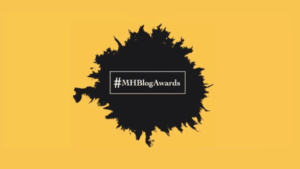Shedding Light On Sexual Abuse In Educational Institutions. Educational institutions play a crucial role in shaping the minds and futures of young individuals. However, the occurrence of sexual abuse in schools and academic settings has become an alarming issue that demands immediate attention. It is essential to shed light on this topic, raise awareness, and implement proactive measures to protect students’ well-being.
This article aims to explore the importance of addressing sexual abuse in educational institutions and highlights the need for comprehensive measures to ensure a safe and secure environment for all students.
6 Measures to prevent sexual abuse in Schools
Understanding the Scope of the Issue
Sexual abuse in educational institutions encompasses a range of misconduct, including harassment, assault, exploitation, and grooming. It is essential to acknowledge that this issue can affect students of all genders, ages, and backgrounds. By understanding the scope of the problem, educational institutions can take proactive steps to prevent and address instances of sexual abuse.
Creating a Culture of Awareness and Prevention
Educational institutions are responsible for creating a culture of awareness and prevention regarding sexual abuse. This involves educating students, teachers, staff, and parents about recognizing signs of abuse, promoting consent and healthy boundaries, and fostering an environment where individuals feel safe to report any incidents or concerns. By promoting awareness and prevention, institutions can create an atmosphere of accountability and deter potential abusers.
Stopping sexual abuse requires a collective effort from the entire community. It is crucial to recognize that perpetrators of sexual abuse often hide behind a facade of trustworthiness or hold positions of authority within educational institutions. They may be individuals who are known and respected by both the survivor and the community, making it even more challenging to identify the abuse.
Implementing Comprehensive Policies and Procedures
Educational institutions must have comprehensive policies and procedures in place to address sexual abuse effectively. These policies should include precise reporting mechanisms, investigation protocols, and support services for survivors. It is crucial to establish a confidential reporting system that protects the privacy and safety of victims, encouraging them to come forward without fear of retaliation.
Training and Empowering Staff
Staff members, including teachers, administrators, and support personnel, should receive regular training on identifying, preventing, and responding to instances of sexual abuse. Training programs should cover topics such as recognizing warning signs, appropriate boundaries, mandated reporting, and trauma-informed approaches. By equipping staff with the necessary knowledge and skills, institutions can foster a safer environment and ensure timely intervention when needed.
Engaging Students in Prevention Efforts
Involving students in prevention efforts can be a powerful tool in combating sexual abuse. Educational institutions should promote dialogue, awareness campaigns, and peer education programs to empower students to become advocates for their own well-being and that of their peers. Encouraging open discussions about consent, healthy relationships, and boundaries can contribute to creating a supportive and respectful school community.
Collaboration with External Support Services
Educational institutions should establish partnerships with external support services, such as counselling centres, helplines, and community organizations specializing in addressing sexual abuse. These collaborations can provide additional resources, expertise, and support to survivors and contribute to a holistic approach to managing cases of abuse.
Stand Up for Survivors of Sexual Abuse
Addressing sexual abuse in educational institutions is a critical step in ensuring the well-being and safety of students. By shedding light on this issue, promoting awareness, and implementing comprehensive measures, educational institutions can create an environment that fosters respect, safety, and trust. It is the collective responsibility of administrators, staff, students, parents, and the community to work together, advocate for change, and protect the rights and dignity of every student. By taking proactive steps, educational institutions can become beacons of safety and empower students to reach their full potential without the fear of sexual abuse.
Additionally, it is crucial to emphasize that if you know someone who is experiencing sexual abuse in an educational institution, it is essential to take action and support them. Never hesitate to seek help on their behalf. Confidentiality and the well-being of the survivor should be the utmost priority.
Our organization offers confidential consultations and support services for survivors of sexual abuse in educational settings. We understand the sensitivity of these matters and the importance of providing a safe space for individuals to share their experiences.
Our dedicated team of legal intake specialists consists of trained social workers who approach each case with empathy, respect, and a commitment to supporting survivors. They are here to listen, provide guidance, and help survivors explore their options without any pressure to pursue legal claims. We understand that each survivor’s journey is unique, and our services are tailored to meet their individual needs and circumstances.
Remember, you are not alone, and support is available. Together, we can work towards creating a safer and more secure environment in educational institutions, ensuring that the well-being of students is protected, and survivors receive the care and assistance they deserve.







